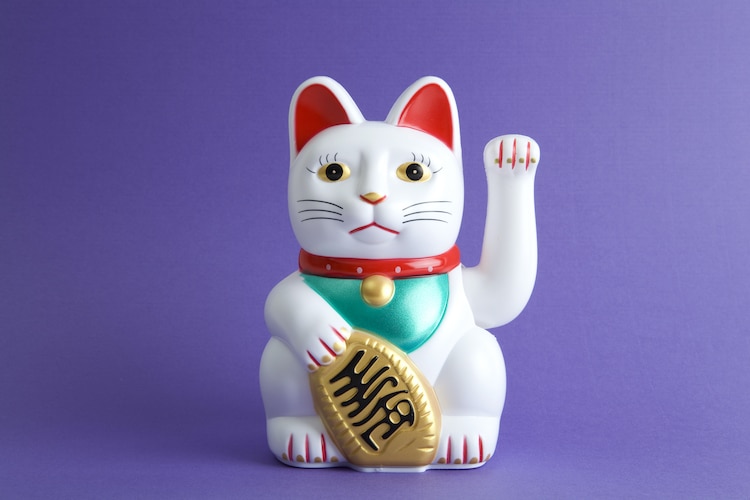
What Is ManekiNeko? Discover the Fascinating History of the Japanese Lucky Cat Modern Times News
The maneki-neko, also known as the welcoming cat, lucky cat, money cat, happy cat, and beckoning cat, dates back to the 17th century and has since become one of the most popular features in Asian.

"Maneki Neko (Lucky Cat)" Art Print by jimmyraynes Redbubble
Maneki-Neko is a well-known figure in Asian culture. Known as the Chinese or Japanese Waving Cat, the lucky cat, or the welcoming cat, Maneki-Neko is recognized visually, though many are unfamiliar with its unique history. The kitschy figure is seen all over the world, but as a good-luck charm, it dates back to the 17th century. What Is Maneki.

Manekineko the lowdown on Japan's beckoning lucky cat Time Out Tokyo
Origins. As far as the origins of the maneki-neko, there are several legends, but two stand out more than others. Probably the most common explanation of this statue's origin is the legend that.

Maneki Neko Lucky Cat (mascot Cat Of Japan) Stock Photo Image of sculpture, statue 51455422
The 5 Facts About Maneki Neko. 1. What Maneki Neko Means. A Maneki Neko is also known as a Lucky Cat or Fortune Cat. Photography by Danny Smythe / Shutterstock. Fortune Cat is known as Maneki Neko.

The ManekiNeko, Beckoning Cat
So enmeshed are lucky cats in the fabric of Tokoname life, that one particular creation became the mascot of the town. Tokoyan - full name Tokoname Mimamori Neko Tokonyan, or Cat to Watch Over You - is a 12-feet (3.8-meter) high, 20-feet (6.3-meter) wide cat statue rising from a concrete slab in the city, made to look as though it's peering over a wall.
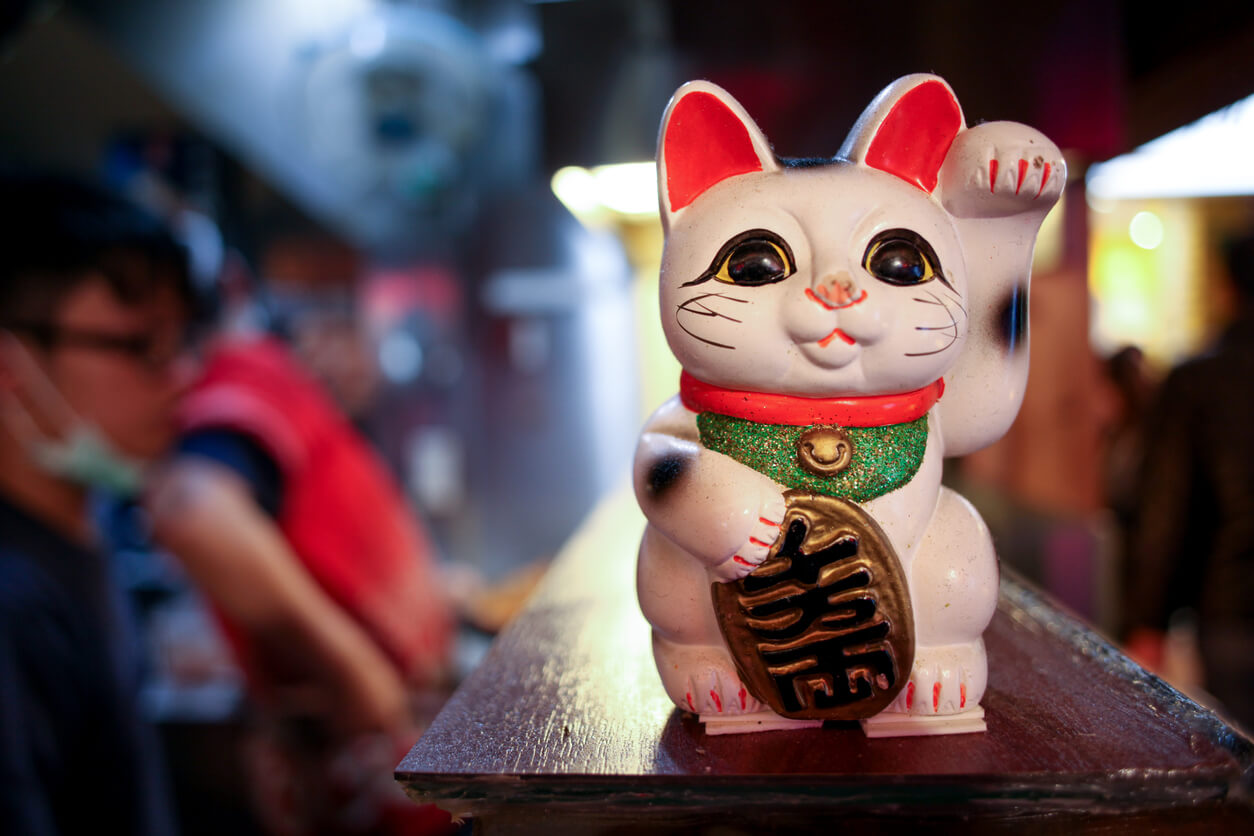
Manekineko The History of the Japanese Lucky Cat CatGazette
Lucky Cat Meaning in Feng Shui. Many people believe Maneki Neko is waving, but the lucky cat is actually beckoning, inviting positive attributes such as wealth, luck, or customers towards it. Some feng shui practitioners have adopted Maneki Neko as a good luck symbol. The cat is also known as the money cat or good fortune cat since many people.
Japanese lucky cat Maneki Neko white color bring luck cute stock vector Crushpixel
The maneki neko statue, also known as the lucky cat, is a symbol that is instantly recognizable all around the world. You can find these lucky cats in businesses, homes, and restaurants from Japan to Europe and the United States.But did you know that the maneki neko has a rich history and deep meaning in Japanese culture?The name alone, maneki neko, translates to beckoning cat and holds a.

Free download White lucky cat illustration, Cat Manekineko Luck, cute cartoon Lucky Cat
The beckoning cat. Maneki-neko means "beckoning cat" in Japanese. The figurine is believed to bring good luck and fortune to its owner. It depicts a seated cat—traditionally a calico Japanese Bobtail—with one upright paw. A Maneki Neko with a raised left paw is said to invite customers and business success, while a raised right paw.

Maneki Neko The Lucky Cat Bubblews Maneki neko, Lucky cat, Neko cat
The maneki-neko is a popular Japanese figurine that is believed to bring good luck and fortune to its owner. Usually made from ceramic or plastic, they depict a Japanese Bobtail cat with its paw raised in a beckoning gesture. Its paw moves back and forth in a swinging motion, and some even have motorized arms so that they can wave all day long.

Maneki neko japanese lucky cat fortune symbol Vector Image
The famous figurine cat, maneki neko , is thought to bring good luck, especially to business owners. Usually made of ceramic - sometimes wood, metal, plastic, and other materials, even jade or gold - it depicts a Japanese Bobtail cat. Maneki neko comes in various styles, some delicate and ornate, others more kitsch or modern.

From Japan Beckoning Waving Lucky Cat for Good Luck Maneki Etsy
Free Shipping Available. Buy Lucky Cat Maneki Neko on ebay. Money Back Guarantee!

What Is Maneki Neko, aka the Lucky Cat?
Maneki-neko with motorized arm beckons customers to buy lottery tickets in Tokyo, Japan. The maneki-neko (招き猫, lit. 'beckoning cat') is a common Japanese figurine which is often believed to bring good luck to the owner. In modern times, they are usually made of ceramic or plastic. The figurine depicts a cat, traditionally a calico Japanese Bobtail, with a paw raised in a beckoning gesture.

Maneki Neko The Wonderful Legendary Lucky Cat! Sakuraco
Most maneki neko are made of ceramic, but there are also cats that are made of plastic, wood, or even expensive materials such as jade or gold. They also come in various colors, all of which have a different meaning. This is an overview of the most common maneki neko colors and their interpretation: Calico cat color: this is the luckiest color.
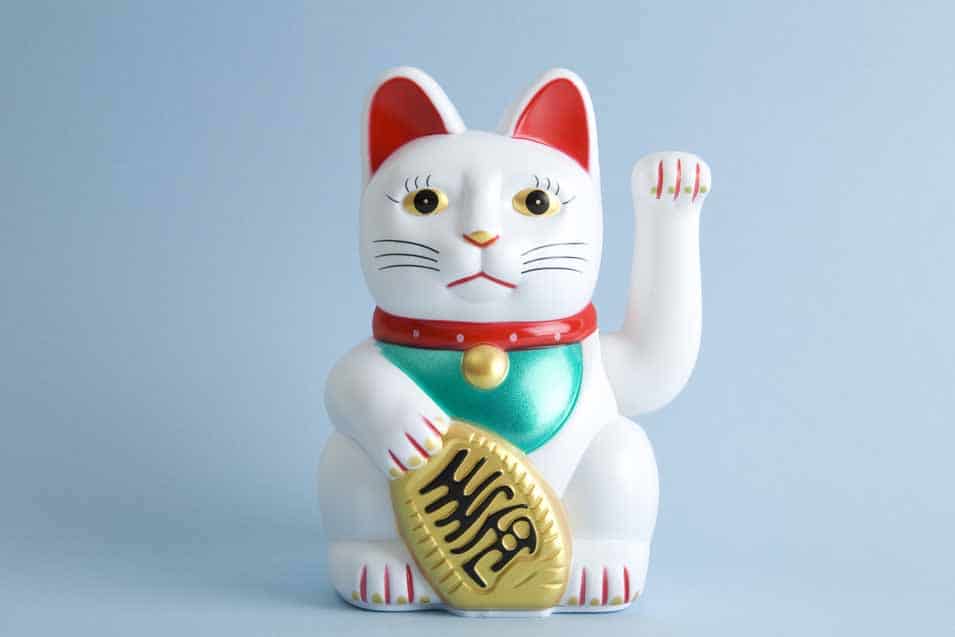
5 Interesting Facts About Maneki Neko Fortune Cats or Lucky Cats
With a stoic or laughing air, a malicious cat invites you, with a sign of the paw, to enter such a shop or a restaurant. This iconic feline of Japanese storefronts is none other than the maneki-neko , an essential lucky charm supposed to bring luck and wealth. In Japanese popular culture, maneki-neko comes in the form of a piggy bank, socks, patterns for noren (Japanese curtains), and other.
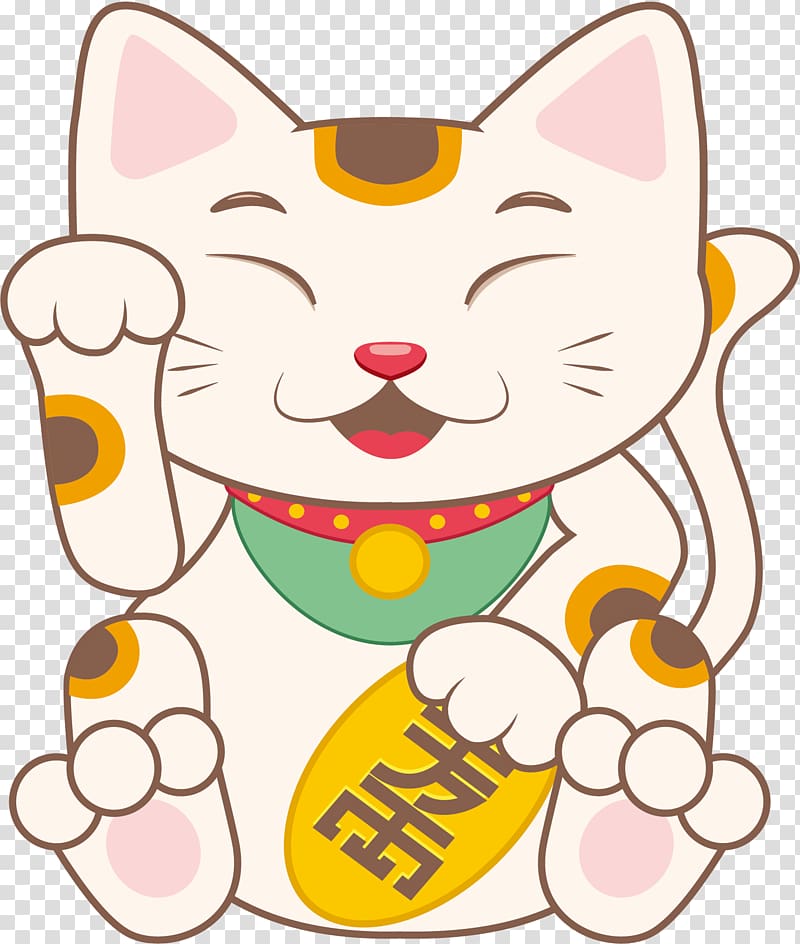
Cat Kitten Cartoon Manekineko, Lucky Lucky Lucky Cat transparent background PNG clipart HiClipart
The tricolour/calico cat - generally black, red and white, with spots on the elbows - is the standard version and considered the most lucky. Black maneki-neko is to ward off bad luck or evil.
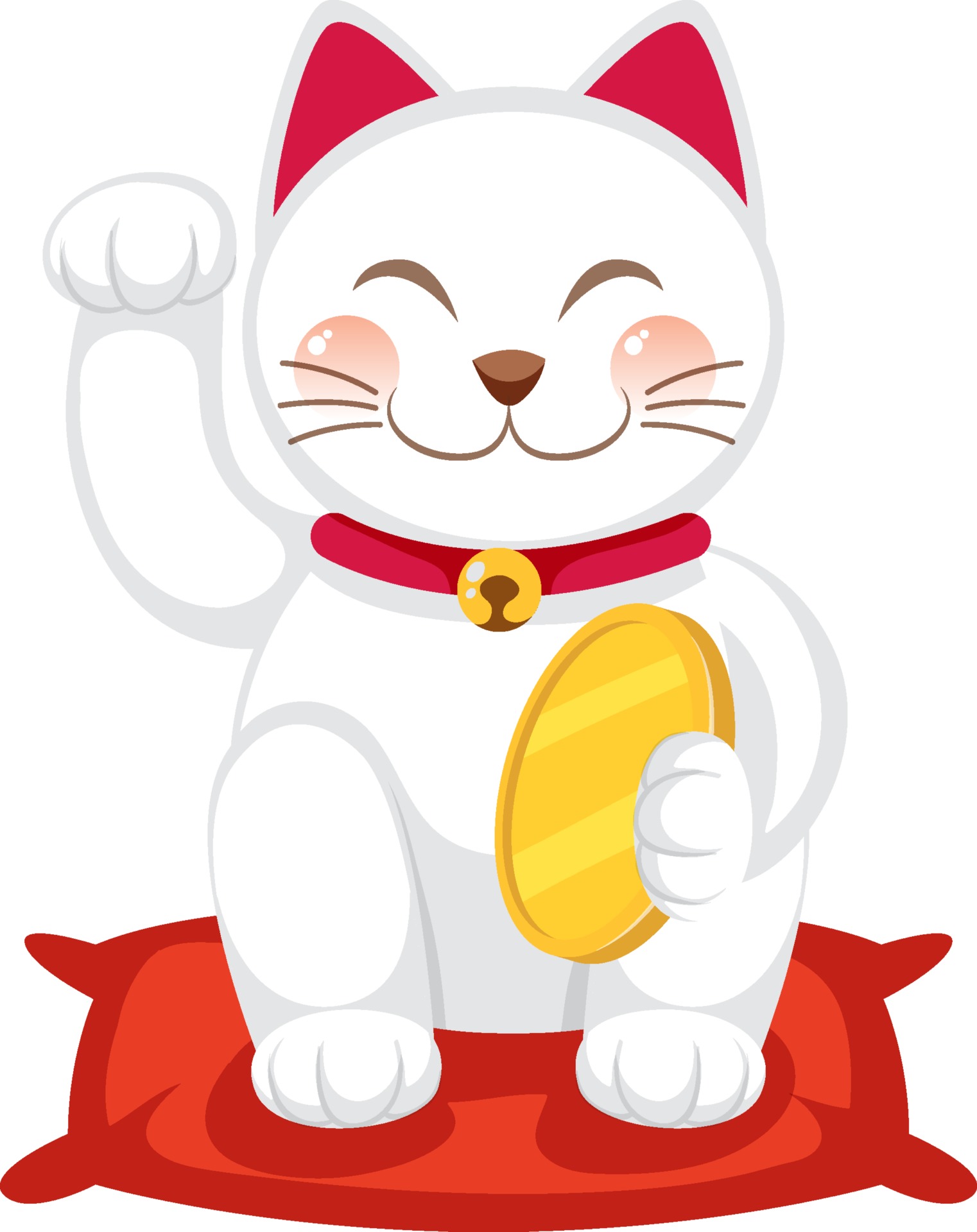
Japanese lucky cat maneki neko cartoon character isolated 2906550 Vector Art at Vecteezy
Legends aside, the real origins of the lucky cat may actually be slightly sordid. Researchers from the University of California Irvine found that Meneki-Neko talismans suddenly became very popular in the Meiji Period (1868-1912) and it is believed that they were used to replace the phallic good luck symbols that were traditionally displayed in brothels after they were banned.